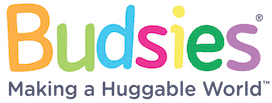Many of us have heard of one of the most popular techniques for children, and it’s called art therapy. This is a whole range of exciting activities that allow us to identify, analyze and correct almost any mental problem. So who is it suitable for? Below, we’ve gathered answers to the most crucial questions.
However, before we dive into the topic, let us share a piece of advice. Art therapy is also valuable for college students and adults since it greatly reduces stress levels. To find more time for it, be sure to rely on write an essay for me services. Students all over the world reach out to them when they need to save energy and give themselves a little break. At a time when mental health is a priority, outsourcing becomes a true magic wand.
The Healing Power Of Art
The term “art therapy” was coined in 1915 by Margaret Naumburg. She founded an art school and studied children’s self-expression through creativity. Later, Naumburg wrote many books on it, which made members of well-known communities explore this topic in more detail. Later, the approach became popular among psychologists and educators all over the world.
Today, art therapy allows you to explore the emotional sphere, identify the reasons for stress, improve self-esteem as well as ease the symptoms of depression and anxiety. Most importantly, art therapy helps to analyze children’s behavioral problems, developmental disorders, and emotional experiences.
In case you decide to study the history of art therapy, why not find a little time for it in your schedule? Just look up the best research paper writing services like EssayReviews to choose the most talented homework assistant. That’s how you can devote time to what interests you the most at this very moment.
What Problems Does Art Therapy Solve?
Art therapy has many functions:
- Helps to express emotions that are difficult for a child to share with adults;
- Has an amazing effect on academic performance and brain function;
- Develops the cognitive and emotional sphere as well as creative abilities;
- Increases self-esteem;
- Synchronizes the work of the cerebral hemispheres;
- Has a therapeutic effect since it reduces fatigue, anxiety and other negative states;
- Corrects deviations and violations of development, revealing the true potential of the child.
When Does A Child Need Art Therapy?
Art therapy is useful for children who have difficulty adapting to new conditions. Be sure to take your kids to an art therapy lesson in case they struggle with:
- Aggression;
- Anxiety, fears, nervous tics, stuttering;
- Excessive irritability, a quick change of mood;
- Apathy;
- Difficulties with mental and speech development;
- Difficulties in adaptation and socialization at school;
- Preparation and adaptation to kindergarten;
- Stress caused by moving;
- Shyness and self-doubt.
Benefits Of Art Therapy
Even though art therapy classes take place in a comfortable environment and resemble usual classes, they have proven themselves quite well. The therapeutic effects that are usually achieved tend to be quite impressive.
With art therapy, you can:
- Strengthen the child’s self-esteem;
- Improve their relationship with loved ones;
- Help them with socialization and adaptation;
- Learn to deal with negative situations;
- Help them embrace their uniqueness;
- Express deeply hidden feelings.
Art therapy classes assist children with behavioral and mental disorders in achieving progress and expressing their individuality through art. Moreover, kids are to discover their strengths and talents.
Children quickly dive into the game, actively interacting with the art therapist. During group sessions, they acquire social skills and learn to communicate with others. As a result, they express emotions freely and of course, make friends. In fact, art therapy for adults has the same advantages. In case you want to try it, just send your tasks to the best essay writing services to manage everything on your timetable.
How Do Classes For Various Ages Differ?
Any psychotherapeutic technique takes age characteristics into account. And art therapy is no exception. Age characteristics influence which activity type is chosen and how the results are interpreted.
- For children 2-4 years old, tactility and eye contact are key. Materials used should be bright and eye-catching, while the tasks must be simple and exciting;
- Art therapy for preschoolers 4-6 years old deals with imaginative thinking. Children of this age are called dreamers for a reason. To work out children’s fears and anxieties, rely on fairy tale therapy. Plus, healthy physical activities such as dancing, running and jumping are also great;
- At the age of 7-10 years, children are passionate about designing as they have developed spatial thinking. Therefore, you can invite your child to make a doll house or a spaceship. Working with small details will increase concentration and peacefulness, and will help the children trust each other more;
- Teenagers 11-15 years old are difficult to captivate with fairy tales or modeling. Creative tasks are what works best for them. Therefore, you can ask them to write a poem, discuss a film, or draw their own portrait.
To Wrap It Up
Even if your child doesn’t have any mental problems, a few sessions with an art therapist will not be superfluous. Who knows, maybe they will help to reveal the hidden creative potential that will allow the child to find their calling.
Fortunately, art therapy is a rather gentle and flexible way of psychotherapy, which helps to express repressed emotions. This method promotes self-expression and personal development. Various types of art therapy allow you to solve a wide range of problems: from social adaptation to working out many phobias.



